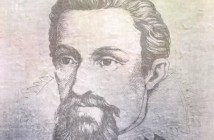Tycho Brahee made the most precise celestial studies of his time. He was born in Denmark in 1546 and raised by his well-off uncle and although his family persuaded him to study law, he chose instead to study astronomy. What are the Tycho Brahe contributions to astronomy?
Brahe’s Discoveries
Brahe contributed a lot to the field of astronomy. Astronomers at the time believed that the heavens consist of separate individual spheres that all revolve around the Earth. In 1572, he studied a supernova in Cassiopeia. The new star stayed visible for one and a half year. In 1577, Brahe studied a comet. Existing theory taught that the occurrences were disorders in the atmosphere, but his accurate measurements exposed differently. Brahe attested that the supernova didn’t change with regard to the nearby stars. He also proved that the comet orbited further than the moon’s path, opposing the theory that the heavens never altered.
Continued Observations
In 1575, King Frederick II wanted to keep Brahe in Denmark by giving him financial support and his own island to study astronomy. Brahe built a large observatory where his detailed observations of the heavens were kept. While the majority of astronomers only concentrated on studying heavenly bodies at exact, odd points in their orbits, he carefully tracked them in their whole observable orbit across the sky, making the most accurate observations proposed at the time. Some of the measurements he made were precise to 1/2 an arc minute. This is particularly admirable as these measurements all made before the introduction of the telescope.
Beginning Theories of Solar Orbit
Even though his observations exposed the flaws of the present system, he didn’t embrace the sun-centered model of Nicolaus Copernicus. Instead, Brahe provided a model which combined the two, placing the sun and moon in orbit around Earth even as the other 5 recognized planets orbited the sun. The model became popular among people who wanted to abandon the older idea, but weren’t prepared to embrace the proposal of the sun at the solar system’s center.
His accurate measurements provided the foundation for a fresh understanding of the movement of the planets. Johannes Kepler contacted Brahe at the end of the 16th century in an effort to get copies of his study. Brahe instead suggested Kepler to be his assistant, assisting him to collect his data.
On the other hand, Brahe was stingier than Kepler had expected and declined to share the measurements of the planets as well as their orbits he made. Instead, he recommended Kepler to focus on solving the Mars dilemma that overwhelmed astronomers.
Due to its orbit, Mars seems to occasionally travel backwards across the sky, which caused many astronomers to propose epicycles, tiny circles in their orbit. Copernicus’ proposal that the planets revolved around the sun in circles couldn’t even account for the strange motion of the red planet.
Using Brahe’s thorough observations, Kepler understood that the planets orbited the sun not in a circular motion, but in ellipses or stretched out circles. The problem, however, took Kepler almost one decade to resolve and he did not publish it until after the death of Brahe. Even though Brahe’s family planned to obtain as much financial benefit as possible from his observations, Kepler less-than-ethically got them after Tycho’s death.



